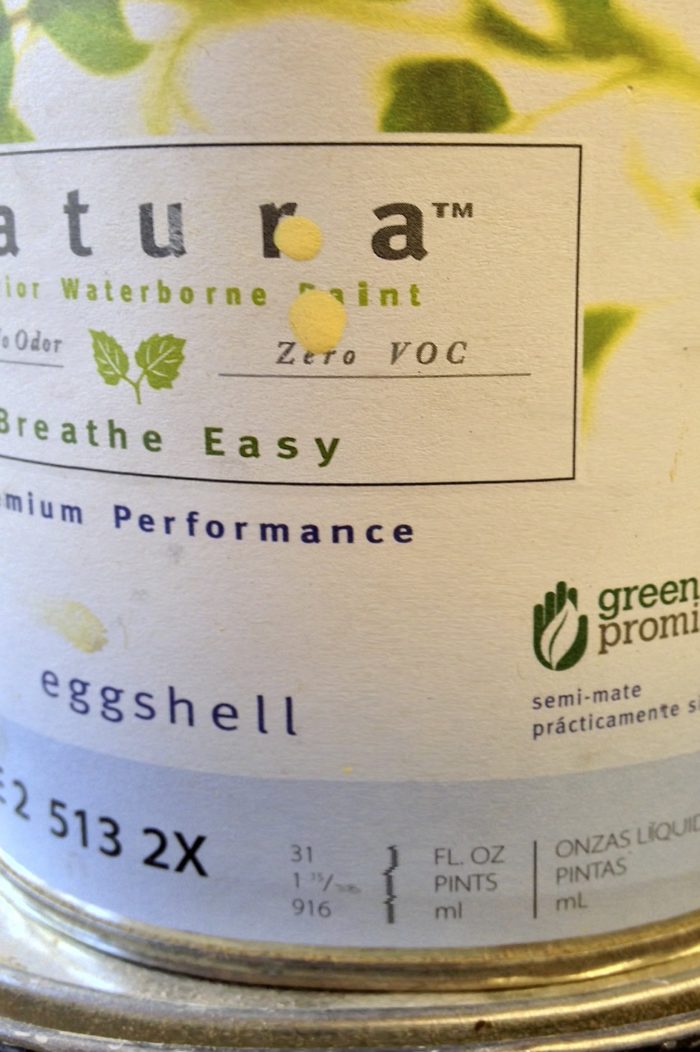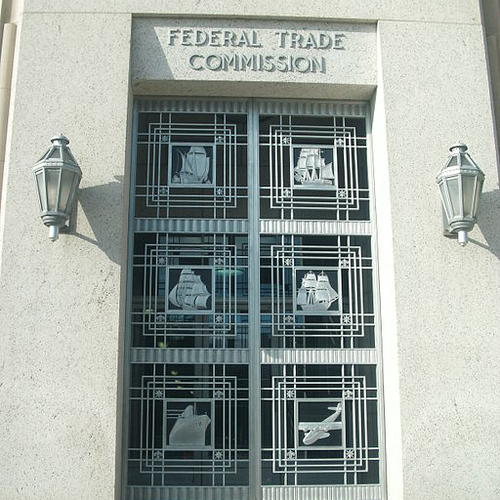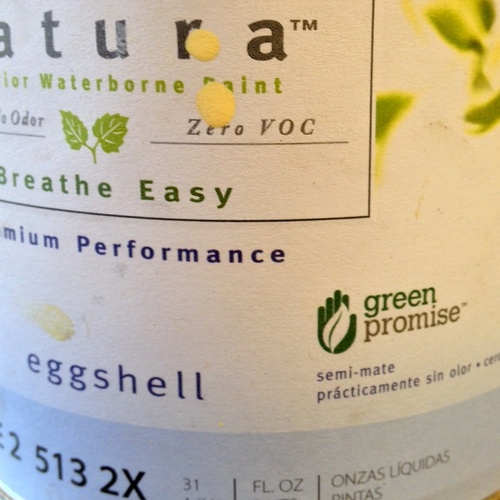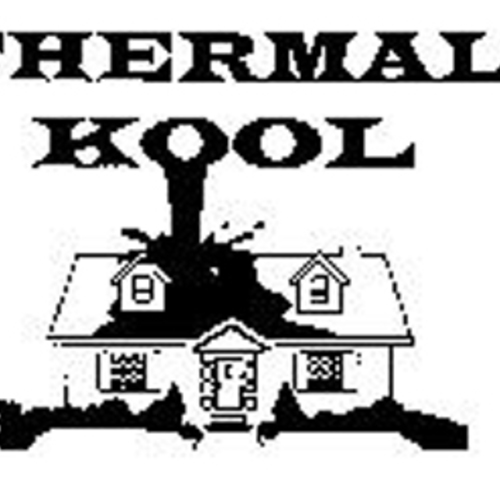
Image Credit: Scott Gibson
Four paint companies have agreed to settle Federal Trade Commission charges that they deceptively promoted products as containing zero volatile organic compounds (VOCs) or as emission free, including during and immediately after application. Some promotions also made explicit safety claims.
Specifically, the first FTC complaint alleges:
“In connection with the advertising, promotion, offering for sale, or sale of Natura paints, Respondent has represented, directly or indirectly, expressly or by implication, that:
“a. Natura paints are emission-free.
“b. Natura paints are emission-free during or immediately after painting.
“c. Natura paints will not emit any chemical or substance, including VOCs, that causes material harm to consumers, including sensitive populations such as babies, asthmatics, and allergy sufferers.
“d. Natura paints will not emit any chemical or substance, including VOCs, during or immediately after painting, that causes material harm to consumers, including sensitive populations such as babies, asthmatics, and allergy sufferers.”
The FTC alleged, the company had no evidence to support those claims.
The four companies — Benjamin Moore & Co., Inc., ICP Construction Inc., YOLO Colorhouse, LLC, and Imperial Paints, LLC — have agreed to consent orders that would bar them from making unqualified VOC-free and emission-free claims.
Safety claims were ‘unsubstantiated’
VOCs are chemical compounds that easily evaporate at room temperatures. All paints emit chemicals during the painting process and as they dry. Some of these chemicals can be harmful to the environment and people, especially to sensitive groups such as babies and those suffering from asthma or allergies. Arguably there is no zero-VOC paint, but that was not the basis of these complaints.
In these four complaints, the FTC charged each company with making “unsubstantiated” claims that their paints were free of emissions and/or that they contained no VOCs, without any qualification (e.g., after X number of hours). The FTC also charged the companies with facilitating deception by retailers that sold their paint. Additionally, in its complaints against Benjamin Moore and ICP Construction, the FTC alleged the companies marketed their paint using “Green Promise” and “Eco Assurance” environmental seals, respectively, without disclosing to consumers that they had awarded the seal to their own products.
Each of the proposed consent orders contains four provisions designed to ensure the companies do not engage in similar conduct in the future, including:
First, they would prohibit the companies from making unqualified VOC-free and emission-free claims unless both content and emissions are actually zero, or emissions are at trace levels, beginning at application and thereafter. The proposed orders’ definition of “trace level of emissions,” which track the Green Guides,’ “trace amount” test, requires, in part, that emission at that level does not cause material harm that consumers typically associate with emission from the covered product, including harm to the environment or human health.
Second, they would prohibit the companies from making claims about VOC levels, emission, odor, and other environmental or health benefits, unless they are true and not misleading, and unless the companies have competent and reliable scientific evidence to back them up.
Third, to correct existing unsubstantiated claims, the orders would require the companies to send letters to their distributors, instructing them to stop using existing marketing materials and providing stickers or placards to correct misleading claims appearing on product packaging or labeling.
Fourth, the orders would bar the companies from providing third parties with the means of making false, unsubstantiated, or misleading representations about material facts regarding paints described.
The proposed orders against Benjamin Moore & Co., Inc. and ICP Construction, Inc. contain two additional provisions, which would prohibit them from misrepresenting third party certifications and failing to adequately disclose a material connection with an endorser.
Public comment period
The commission vote to accept the consent agreements was 2-0. The FTC published a description of the consent agreement packages in the Federal Register. The agreements were subject to public comment for 30 days through August 10, later extended to September 11, after which the commission will decide whether to make the proposed consent orders final.
Note that the commission issues an administrative complaint when it has “reason to believe” that the law has been or is being violated, and it appears to the commission that a proceeding is in the public interest. When the commission issues a consent order on a final basis, it carries the force of law with respect to future actions. Each violation of such an order may result in a civil penalty of up to $40,654.
There are potentially significant legal ramifications for building owners who used these paints: 94% of LEED 2009 new construction projects earned the indoor environmental quality credit for low (or zero) emitting materials. Those materials include paint and coatings. There also are legal implications for the design professional who specified the products, as well as the contractors who applied them.
Stuart Kaplow is an attorney specializing in environmental law. This post originally appeared at his website Green Building Law Update.
Weekly Newsletter
Get building science and energy efficiency advice, plus special offers, in your inbox.














6 Comments
What's next?
I've specified BM's Natura and Yolo for years. Do we, or our clients, have any recourse or claim? What about Behr's Primium Plus and Sherwin Williams' Harmony that claim ZERO VOCs. If they were not named by the FTC, are their claims true?
Armando
What's unclear is whether the paints emit VOCs once dry. They appear to have been sold as emitting no VOCs either when applied or later. While I don't want to downplay the deception, for most people I'd imagine the reason for speccing them is to limit the VOCs in their homes. So paints that don't emit them when dry are probably fine.
Response to Armando Cobo
Armando,
Yesterday, I sent an email to the author of this piece, Stuart Kaplow, asking him to respond to your question. If I hear back, I'll be sure to post his answer here.
Surprised there is no fine or recourse for those deceived.
Sounds like they got their hand caught in the cookie jar and are being told to never do it again. This was a obvious intent to deceive, so there needs to be some compensation that should go to those who bought the product
My understanding is that
My understanding is that you, your dog and your houseplants all emit VOCs. So we need something better to describe what people are worried about.
I'm with Jon R on this one.
I'm with Jon R on this one. In my mind - having a brother who had been in the paint and body industry for ~30 years - VOCs are nasty compounds that are quite unhealthy for us and harm the environment. They are most easily detected by the odors emitted. In a housepaint environment, think "oil-based paint."
I used Benjamin Moore Aura exterior and interior paints on my rebuild / remodel / expansion, and I can say that there was minimal scent from that product. According to BM's site today, Aura is a Zero VOC product based on EPA Method 24.
So is BM falsifying the results, is EPA Method 24 irrelevant, or has the author and/or court determined that "Zero VOC" is intended to be the same as "emission free"? Pure water vapor qualifies as an emission. I'm not a chemist, but I doubt it's considered a VOC.
Log in or create an account to post a comment.
Sign up Log in